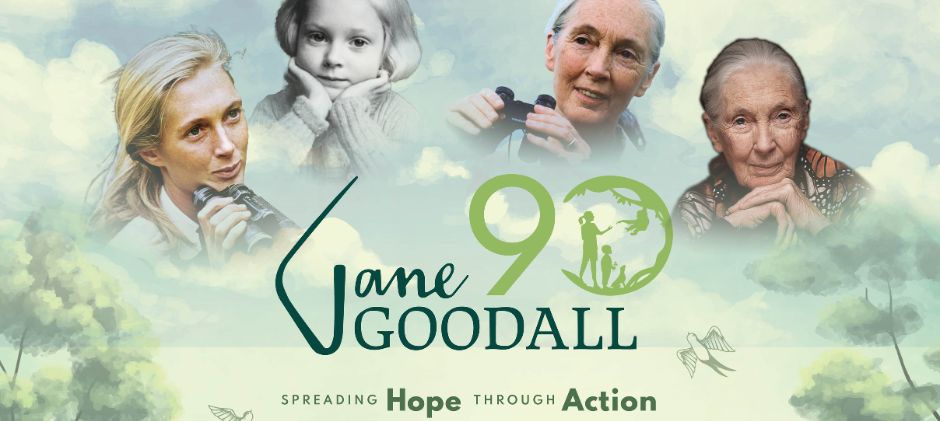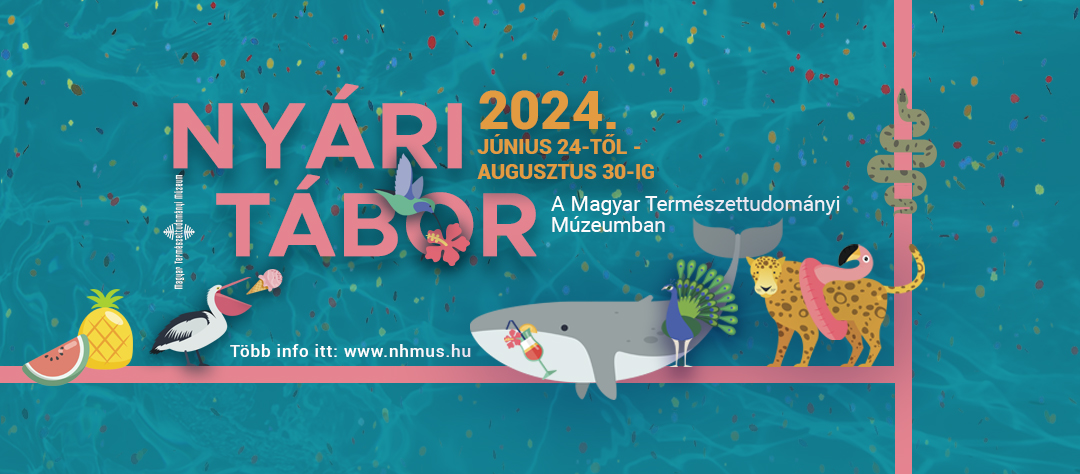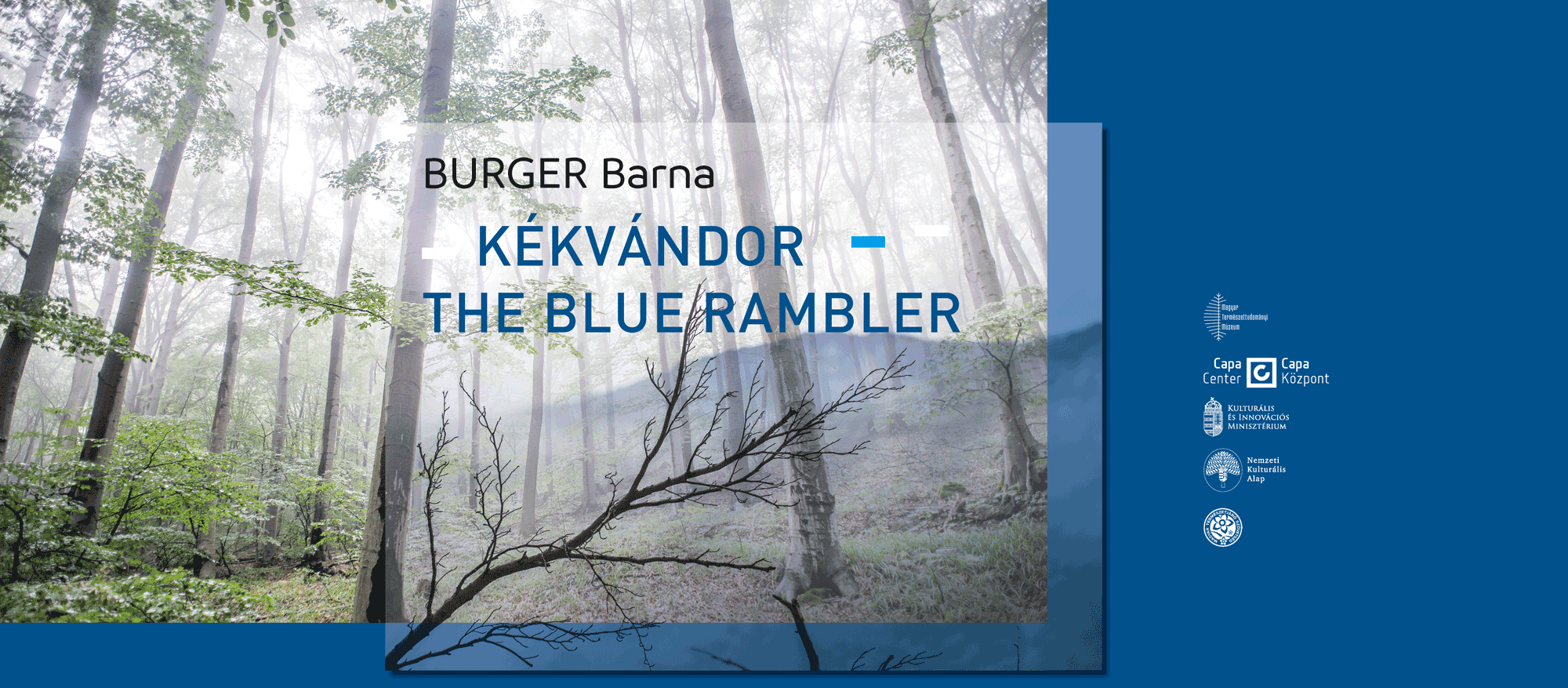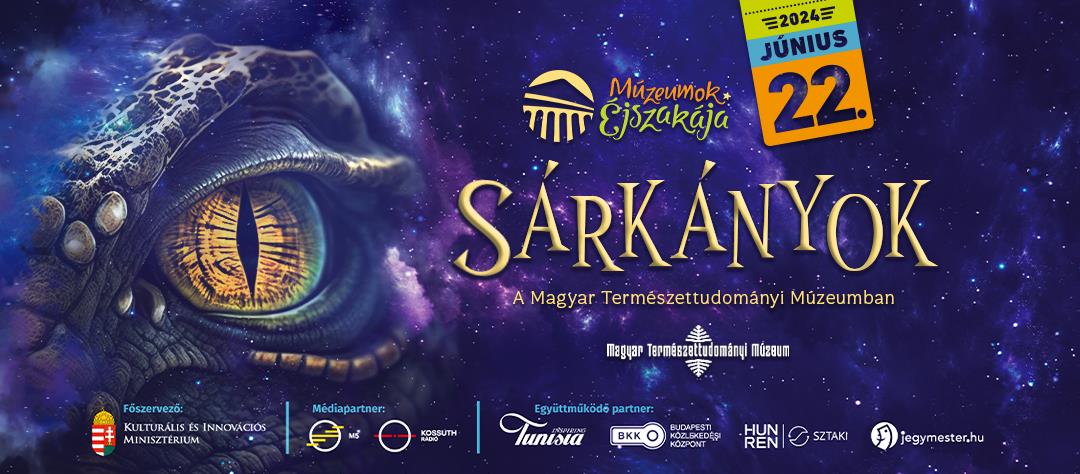Lajos Bíró (Tasnád, 1856- Budapest, 1936) was a multitalented man; a zoologist, entomologist and also an ethnographer. In addition, he passionately took photographs, therefore we have his heritage remained in pictures about the days of his exciting expeditions.

Portrait of Lajos Bíró
He left for the completely undiscovered German New Guinea (today it is the northeast part of Papua New Guinea) as an entomologist to do collecting and observing works between 1896 and 1902. He recognized that the indigenous people of the area still practiced habits of Stone Age life and had never lost their unique and valuable culture under the colonization. He consciously decided to make close acquaintances with the Papuans by living in their communities, following their rules. It was also a good opportunity for him to do ethnographic research, as well.
The Hungarian Natural History Museum preserves nearly 200, 000 of his collected specimens, 2,400 species of which were described new to science back then. His photos that help us gain insight into the researching work of that time also enrich our collection.

Lajos Bíró with his wife” „and indigenous Papuan people
Bíró never got married home in Hungary; however, he had three wives in New Guinea. According to the local traditions, he couldn’t take his wife with himself when he moved to a new region. The name of his first wife was Szagha, the second was Maraqua and third was Mászisz.
He writes about his marriage experiments in his note in the following way:”I am a nature examiner, therefore I am supposed to experiment on nature in the most different ways. Although marriage is not considered to be a part of the natural history according to science, a change of mind can be brought by future”
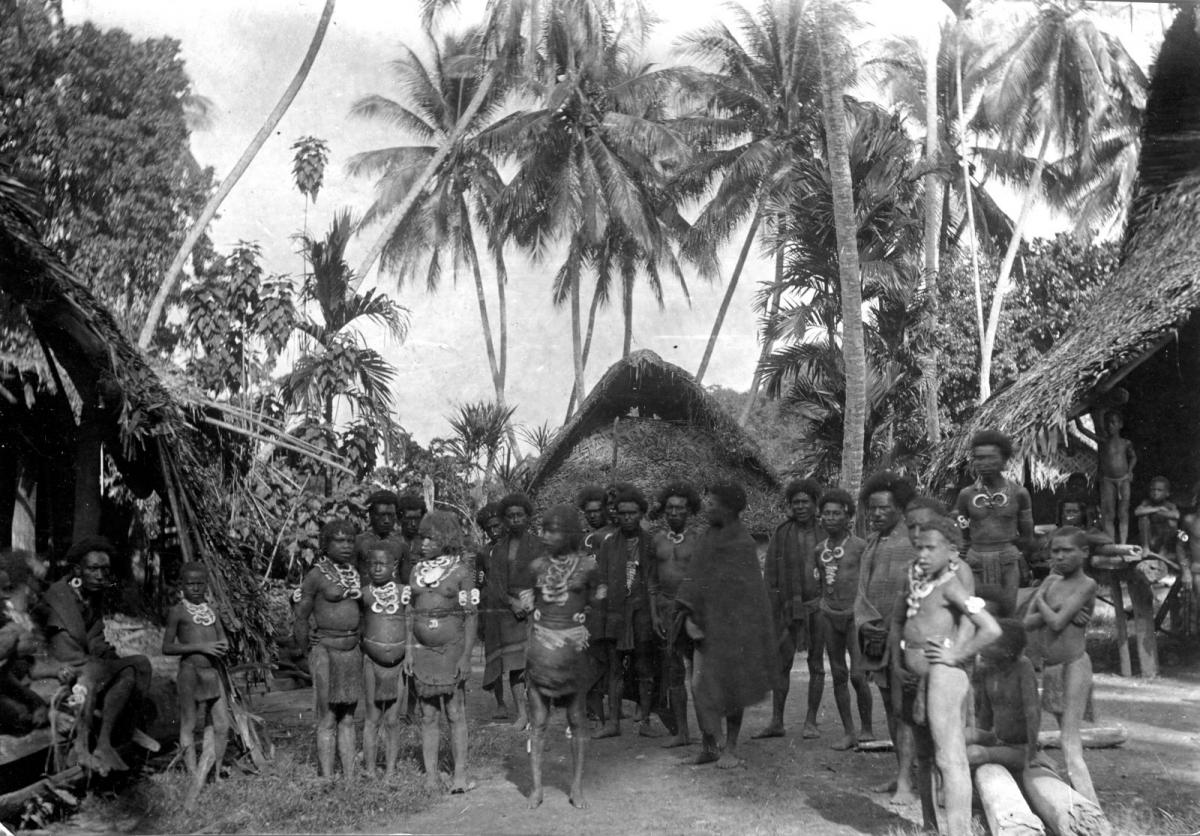
Village people in Papua New Guinea
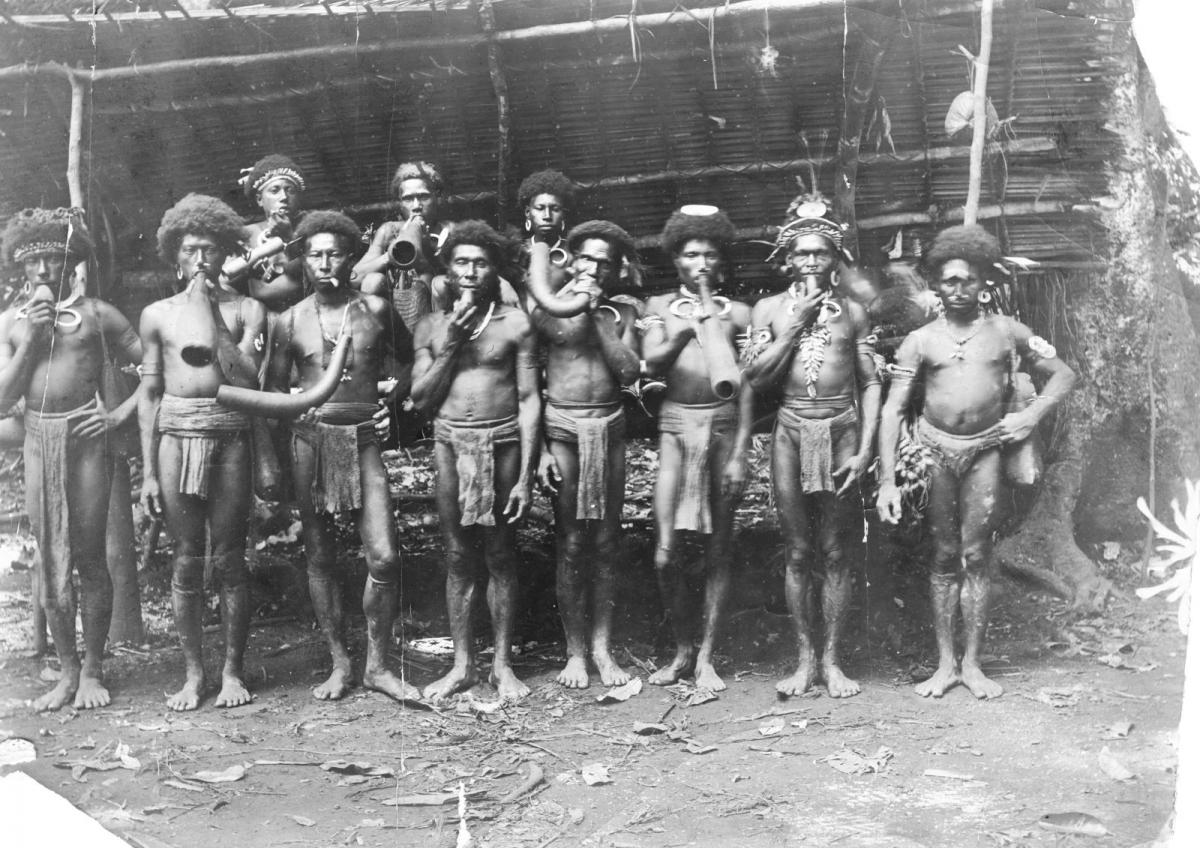
Papuan music band in Bili Bili
As Bíró had advocated the interest of the locals of Bili Bili, they invited him to live with them. He wanted to avoid moving there, thus he conceived a request that seemed to be impossible to accept: an indigenous wife. However, the local people agreed to his condition and he could find no more excuses

An indigenous group of Monumbo

”Ready for a fight” – a Papuan fighter in New Guinea
Warfare between tribes was quiet common, as the insults were often retaliated by blood revenge.

Men in Monumbo

An open-air medical examination

”Girls. The child, the adolescent and the maiden.” Lajos Bíró’s note can be read at the bottom of the photograph.

Fish ladder at the estuary of Jomba River

Suspension bridge across the Jomba River
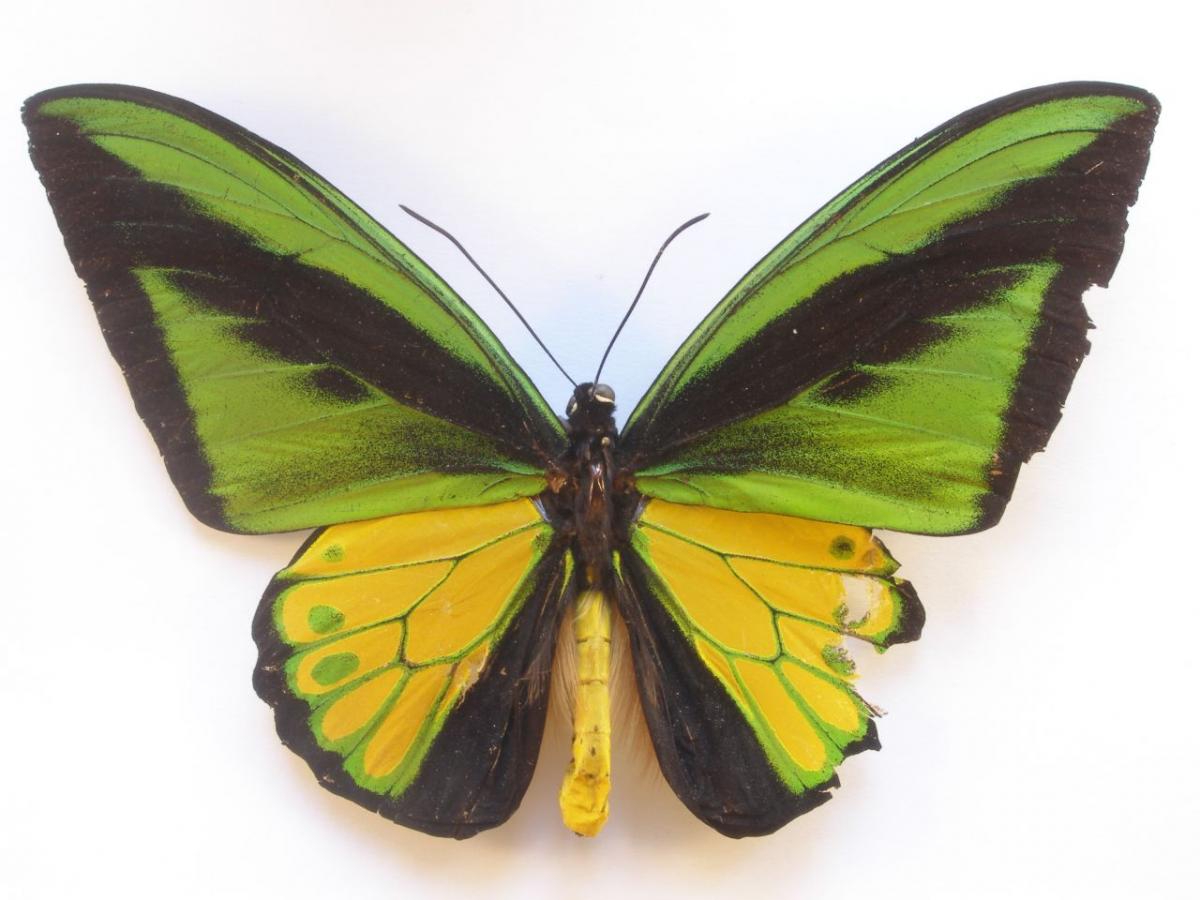
Ornithoptera goliath (Goliath Birdwing)
Bíró belonged to the first entomologists who researched insect fauna in Papua New Guinea. Material he sent to Budapest contained two large male and a female Ornitopthera goliath (Goliath Birdwing). The life of the species was researched by the famous scientist József Szent-Ivány who had to flee the country from the invading Red Army in 1945. Due to Szent-Ivány’s results, this species is bred in the butterfly conservatory of Papua New Guinea, they are preserved by many public collections and they also become beautiful ”ornaments” of several exhibitions.

Papua New Guinean ground beetle (Catascopus biroi) - holotype
This colourful metallic ground beetle was collected by Bíró in Papua New Guinea in 1897. Currently 90 species are known of the genus Catascopus; all of them are brightly coloured and inhabited the Tropics. Apart from the Catascopus biroi, nearly 250 species and 17 genera retain Bíró’s name.
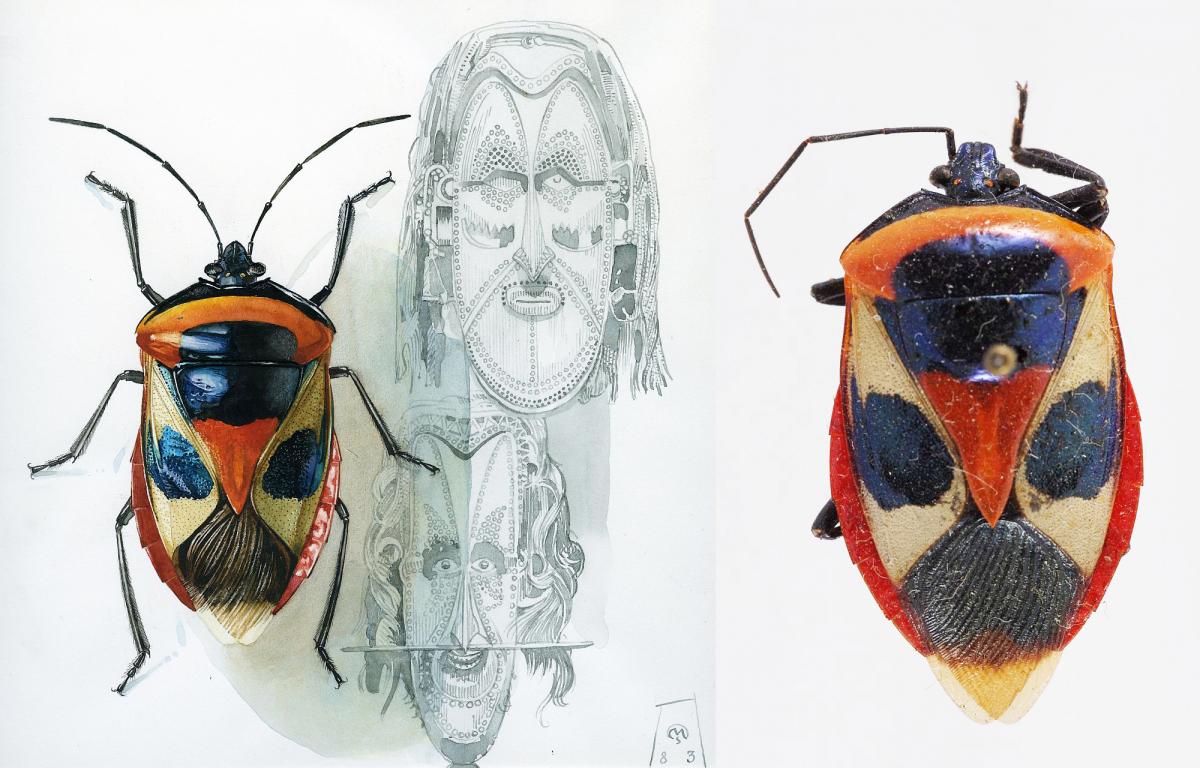
Digital picture of a Tropical Pentatomidae (left) and a specimen collected by Bíró (right)
Three specimens of this Pentatomidae were included in Bíró’s collection. Almost a century later they inspired Mihály Csiby, an outstanding insect painter, to illustrate them creatively with human masks in his paintings.

Inconstant veined singing cicada (Baeturia inconstans)
In the note pinned under the animal, the colour of the insect can be read, which was recorded by Lajos Bíró during his observation on his field work. The specimen, along with other ones of the same species, had laid in museum boxes for a hundred years until A.J. de Boer, a Holland researcher, began to investigate them, sorting out more species new to science. The Baeturia biroi was named after Bíró as an acknowledgment of Bíró’s significant collecting work. The name of the species above (Bauteruia incostans) refers to the variable occurrences of the specimens.

The skull with the head-gear was suspended in a meeting house
Lajos Bíró bought this skull to Hungary, which had originally been suspended in a meeting house for ritual reasons. Our museum has been preserving it since 1905 and now it enriches the collections of the Department of Anthropology.
Papuans used to practice the rituals of consuming human flesh; they ate their enemies captured from other tribes during their warfare. Although this tradition has already been abolished, some isolated tribes are still assumed to live as cannibals.

A man skull that was painted red for ritual reasons. The marks of the red paint can still be seen on the forehead and the temples.
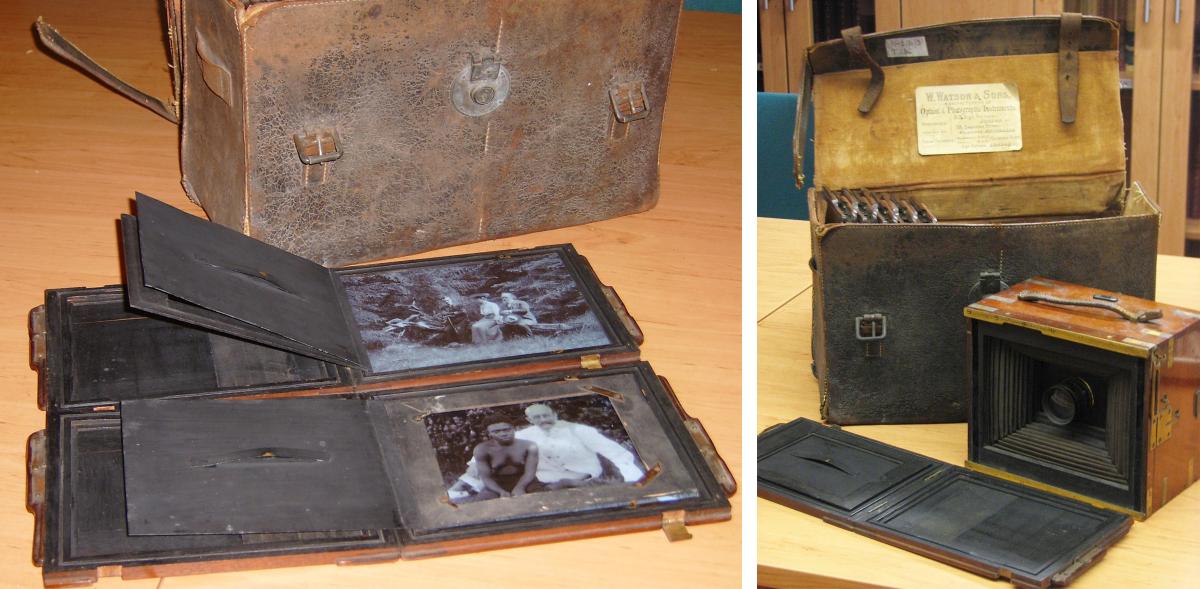
Bíró Lajos’ camera, by that he immortalized his adventurous expeditions for posterity. This camera was produced by W. Watson & Sons between 1889 and 1905.
Lajos Bíró spent 6 years in this exotic area, and he also visited Java, Singapore and Australia to collect and deepen in literature. On his way home he stopped in Sri Lanka (formerly called Ceylon until 1972), India, Oman and Egypt. When he arrived back to Budapest on 27th August 1902, a huge crowd had been waiting to greet him. Bishop Vilmos Frankói, who had been the former general secretary of the Hungarian Academy of Sciences, organized a reception to have Bíró appointed as the honourable custodian of the Department of Zoology of the Hungarian Natural History Museum. However, Bíró’s adventures had not stopped there yet. Until his death (2nd September1931) he intensively continued his research travelling to Malta, Tunis, Crete, Transylvania and the Balkan Mountains.
Editor: Szabolcs Simó
Translator: Bernadett Döme
